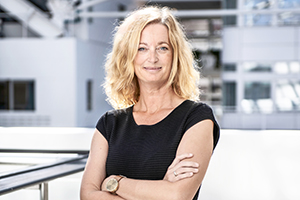AI supports agile working methods

The development of AI solutions is creating a closer relationship between supplier and customer, with increased transparency and mutual exchange.
Artificial Intelligence (AI) is opening up many opportunities for both producers and suppliers. Using AI to optimize maintenance and refine processes is increasing productivity and sustainability and at the same time improving safety. In addition, AI is driving increased automation, for example through the use of collaborative robots, which also increases productivity and lowers costs.
For suppliers, the new AI solutions can provide insights into how their products are used, and this information can be used not only in product development but also in advising customers.
Industrial companies wanting to develop and benefit from AI must be capable of working in ways that are different from traditional approaches and strategies. In the future, producers will likely launch products earlier, before they are fully developed and
tested, allowing users earlier access to the products and services and a role in a collaborative final development of the solution that more precisely fits the user’s needs.
“We have to be much more open to the market,” says Petra Sundström, Head of Digital Business Development. “It’s no longer possible to have the development process shrouded in secrecy. We must start talking about challenges, not just about solutions, if only because that’s the way we can attract the skills that we’ll be depending on going forward.”
Higher efficiency means better productivity
In the mining sector, there are clear incentives for exploiting the potential of AI to the full, she says.
“For a start, it’s obvious that a whole lot of money can be saved. It’s a basic necessity to be able to prevent unexpected stoppages in above-ground processes, which, if they happen, can cause costs running into millions for every hour that passes.”
It is also possible to perform AI-supported analysis of, for example, various stages of production and the final products so that various processes can be optimized and streamlined.
“Higher efficiency means better productivity, of course, but at the same time there is an important sustainability side to this. Increased efficiency enables us to save on resources such as electricity and water, which is an extremely important goal to aim at.”
Development and implementation of AI solutions provides Sandvik with the ability to offer customers increasingly detailed and appropriate advice on how certain operations could be performed more efficiently and how their machines can be used optimally in specific situations. Listen to a podcast where Petra Sundström and Pernilla Jonsson from Ericsson talk about the opportunities presented by AI: home.sandvik/meetsandvik
Listen to a podcast where Petra Sundström and Pernilla Jonsson from Ericsson talk about the opportunities presented by AI: home.sandvik/meetsandvik
“This, too, requires a certain adjustment on our part,” says Sundström. “Instead of delivering pure figures into customer systems, we undertake to contribute more directly to their productivity. This means closer collaboration and greater responsibility, which may be felt to be a big step to take. But it’s the right way to go.”
Sundström says the increasingly strong partnership follows on naturally from the agile development model. “You can look at it this way, that the solution we are selling is like a small snowball that we go on rolling so it gets bigger and bigger. And the customer has to be with us and at least show us the direction. Image-based technology may become an attractive line of development in AI in the future. A specially designed, high-technology camera may be a highly useful type of sensor,” Sundström says. “Image recognition is a fast-growing sector right now. Combined with machine learning, this may find applications all the way from personal safety to flow optimization.”
But for growth to make really great strides in the future, some of the skepticism surrounding AI will have to be dispelled. “There are still some who believe that AI will ‘take our jobs,’” says Sundström. “Admittedly, some jobs will disappear, but new ones will be created, and the shift will be gradual. This development will open up an infinite number of opportunities in most areas of society. At the same time, it’s important to be aware that AI has many different sides to it. It isn’t a single solution but rather an umbrella concept that embraces a series of different applications.”